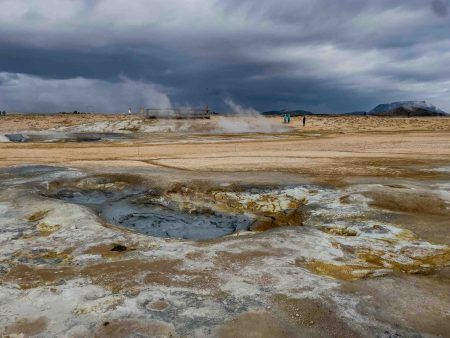
The water crisis is a pressing global issue that affects billions of people around the world. Despite water covering about 71% of the Earth’s surface, only a small fraction of this is freshwater suitable for human use. This scarcity, coupled with increasing demand, pollution, and climate change, has led to a severe water crisis that poses significant challenges.
However, there are also numerous local solutions being implemented to address these challenges. This article delves into the global dimensions of the water crisis and highlights effective local solutions.
Understanding the Water Crisis
The Global Context
The water crisis is characterized by a mismatch between the availability of freshwater and the growing needs of human populations. According to the United Nations, over 2 billion people live in countries experiencing high water stress.
This means that the demand for water exceeds the available supply during certain periods, leading to competition among users.
Several factors contribute to the global water crisis:
- Population Growth: The global population is projected to reach 9.7 billion by 2050, significantly increasing the demand for water for drinking, agriculture, and industry.
- Urbanization: Rapid urbanization puts immense pressure on existing water supplies and infrastructure, often leading to shortages and poor water quality in urban areas.
- Climate Change: Changes in weather patterns, more frequent droughts, and the melting of glaciers affect the availability of freshwater sources.
- Pollution: Industrial discharge, agricultural runoff, and inadequate wastewater treatment contaminate freshwater supplies, making them unsafe for use.
The Impact on Human Health and Livelihoods
The water crisis has far-reaching impacts on human health, food security, and economic development. Lack of access to clean water and sanitation contributes to the spread of waterborne diseases such as cholera and dysentery.
Additionally, water scarcity affects agricultural productivity, leading to food shortages and higher prices. This disproportionately affects the poorest and most vulnerable populations, exacerbating social inequalities.
Local Solutions to the Water Crisis
While the global water crisis presents daunting challenges, numerous local initiatives have shown promise in addressing water scarcity and improving water management. These solutions often involve a combination of technological innovation, community engagement, and sustainable practices.
Rainwater Harvesting
Rainwater harvesting is a simple yet effective method to alleviate water scarcity, especially in arid and semi-arid regions. By collecting and storing rainwater, communities can reduce their dependence on unreliable or distant water sources.
For example, in India, traditional rainwater harvesting systems known as tankas have been revived in many drought-prone areas. These systems collect rainwater during the monsoon season and store it for use during dry periods, providing a reliable source of water for drinking and irrigation.
Sustainable Agriculture Practices
Agriculture accounts for about 70% of global freshwater withdrawals. Therefore, improving water use efficiency in agriculture is crucial for addressing the water crisis. Techniques such as drip irrigation, which delivers water directly to the roots of plants, can significantly reduce water wastage compared to traditional irrigation methods.
Additionally, adopting drought-resistant crop varieties and practicing conservation tillage can help farmers maintain productivity while using less water.
Wastewater Treatment and Reuse
Treating and reusing wastewater is another important strategy for mitigating the water crisis. Advanced treatment technologies can convert wastewater into a valuable resource for irrigation, industrial processes, and even drinking water.
For instance, in Singapore, the NEWater initiative treats and purifies wastewater to produce high-quality drinking water, supplementing the city-state’s limited freshwater resources. This approach not only conserves water but also reduces pollution and environmental degradation.
Community-Based Water Management
Empowering local communities to manage their water resources can lead to more sustainable and equitable water use. Community-based water management involves engaging local residents in decision-making processes, ensuring that water distribution is fair and that resources are used efficiently.
In Kenya, the Water Resource Users Associations (WRUAs) are an example of successful community-based management. These associations bring together water users within a specific catchment area to collaboratively manage water resources, resolve conflicts, and implement conservation measures.
Desalination
For coastal areas facing severe water shortages, desalination offers a viable solution. Desalination plants convert seawater into freshwater by removing salts and other impurities. While desalination is energy-intensive and can be expensive, advancements in technology are making it more efficient and cost-effective.
Countries like Saudi Arabia and Israel have invested heavily in desalination to meet their water needs, demonstrating its potential as a long-term solution to the water crisis.
Policy and Governance
Effective policy and
governance are essential for addressing the water crisis at both global and local levels. Governments must implement regulations and policies that promote sustainable water use, protect water resources, and ensure equitable access.
Integrated Water Resources Management (IWRM)
Integrated Water Resources Management (IWRM) is a comprehensive approach that coordinates the development and management of water, land, and related resources to maximize economic and social welfare without compromising the sustainability of vital ecosystems.
IWRM involves stakeholders from various sectors and levels of government, fostering cooperation and holistic planning. For example, the European Union’s Water Framework Directive is based on IWRM principles, aiming to achieve good water quality across Europe by involving all relevant stakeholders in water management.
Investment in Infrastructure
Investing in water infrastructure is critical for ensuring reliable water supply and sanitation services. This includes building and maintaining dams, reservoirs, pipelines, and treatment facilities. In developing countries, improving infrastructure can significantly enhance water access and quality.
For instance, Ethiopia’s Growth and Transformation Plan prioritizes investments in water infrastructure to support agricultural development and provide safe drinking water to rural communities.
Public Awareness and Education
Raising public awareness about the importance of water conservation and efficient water use is essential for changing behaviors and reducing water waste. Educational campaigns can inform communities about simple practices, such as fixing leaks, using water-saving appliances, and harvesting rainwater.
In Australia, the “Target 140” campaign successfully encouraged residents of Brisbane to reduce their water consumption during a severe drought, demonstrating the power of public engagement.
International Cooperation
Water resources often cross political boundaries, making international cooperation crucial for effective water management. Transboundary water agreements can help countries share water resources equitably and manage them sustainably.
The Nile Basin Initiative, involving countries along the Nile River, is an example of a cooperative effort to address shared water challenges through dialogue, data sharing, and joint projects.
Technological Innovation
Advances in technology play a vital role in addressing the water crisis. Innovations such as smart irrigation systems, real-time water quality monitoring, and remote sensing for groundwater management can enhance water use efficiency and resource management.
For example, the use of drones in agriculture to monitor crop health and optimize irrigation has proven effective in conserving water while maintaining yields.
Conclusion
The water crisis is a complex global challenge with far-reaching impacts on health, food security, and economic development. However, by understanding its causes and implementing effective local solutions, we can make significant strides toward ensuring sustainable water management.
From rainwater harvesting and sustainable agriculture to advanced wastewater treatment and community-based management, there are numerous strategies that can help mitigate water scarcity and improve water quality.
Moreover, strong policies, investment in infrastructure, public awareness, international cooperation, and technological innovation are essential components of a comprehensive approach to tackling the water crisis. By combining these efforts, we can work towards a future where everyone has access to safe, sufficient, and sustainable water resources.
The water crisis is not insurmountable. With collective action and innovative solutions, we can overcome this challenge and secure a better, more water-secure future for all.



